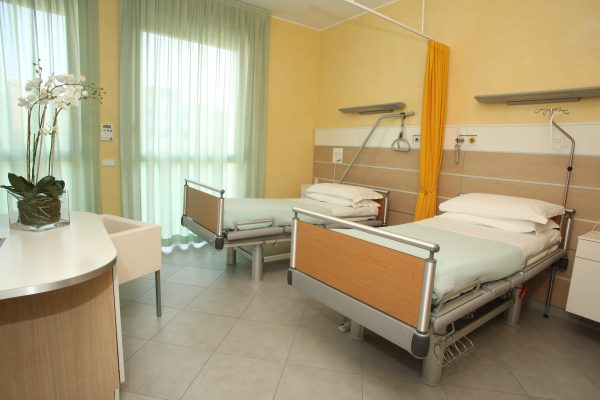Shoulder and elbow surgery involves a series of procedures designed to address shoulder and elbow conditions, primarily through minimally invasive procedures.
Shoulder tendon surgical intervention and treatment
A surgical interventions on the shoulder tendon is recommended if the patient experiences persistent pain or weakness in the shoulder that does not improve over time. Tendon lesions are lacerations or tears of the tendon tissue, with separation from the bone surface. This is primarily caused by a gradual degeneration of tendon tissue and therefore the probability of encountering this condition increases with age.
Trattamento della sindrome da conflitto subacromiale
Subacromial conflict syndrome is a pain syndrome consisting in the compression of the shoulder tendon during elevation of the arm and the return phase. The increase in friction causes inflammation, which can lead to the formation of painful calcifications. The goal of the surgical procedure is to reduce or eliminate the effects of subacromial conflict, widening the gap between the acromion (the upper part of the shoulder blade) and tendons, thus facilitating the optimal movement of the shoulder. The most commonly used surgical technique for this type of intervention is arthroscopy.
Rotator cuff surgical intervention and treatment
The rotator cuff is a network of four muscles whose tendons form a sheath around the head of the humerus bone attaching it to the scapula, facilitating the lifting and rotation of the arm. Rotator cuff surgical interventions involve reattaching the tendon to the humeral head and securing it to the bone using anchors. This type of intervention can be performed using arthroscopy.
Treatment of shoulder dislocation and instability
In particular situations, for example after a severe contusion, the rotator cuff cannot prevent the humeral head from protruding from its normal position. These cases refer to dislocation of the shoulder.
In the case of risk of repeated dislocations, the shoulder can be stabilised using arthroscopic surgery, reconnecting loose or torn ligaments using anchors.
Shoulder osteoarthritis treatment
Shoulder osteoarthritis is a degenerative condition involving the wear of the shoulder cartilage and friction between the scapula and the humerus. Surgical treatment of the condition makes it possible to replace the worn cartilage with prosthetic implants.
Acromioclavicular osteoarthritis treatment
When arthritis affects the joint connecting the acromion to the clavicle, the condition is known as acromioclavicular osteoarthritis. The surgical procedures for the treatment of this type of osteoarthritis can be performed using arthroscopy and consists in removing a small portion of the clavicle bone, removing the joint or normalising the lower surface of the joint.
Shoulder arthroscopy
Arthroscopy of the shoulder is an intervention designed to diagnose and treat injuries and conditions of the joints.
To perform the surgical procedure using arthroscopy it is not necessary to make deep incisions (the orthopaedic surgeon makes small skin incisions measuring just a few millimetres to insert the arthroscope). This instrument equipped with optical fibres is able to illuminate the area concerned. The arthroscope is connected to a camera that allows the surgeon to see inside the joint and to operate. Since muscles and tendons are not cut as part of this procedure, post-operative pain and swelling are reduced and the recovery time is decreased.
Shoulder prosthesis (anatomical and reverse prosthesis)
When osteoarthritis is in a very advanced stage, it is possible to intervene by implanting a prosthesis in the shoulder. An anatomical prosthesis reproduces the normal anatomy of the shoulder. A plastic cup is introduced in the pocket of the scapula bone, while a metallic ball is connected to the humerus. However, in cases when the rotator cuff is also damaged, a traditional prosthesis is not able to reproduce the physiological movement. In these cases it is preferable to intervene using a reverse prosthesis, in which a reversed cup/ball configuration is used, taking advantage of the deltoid muscle to facilitate movement.
Fortunately, today, shoulder and elbow surgical interventions tend to be minimally invasive and less painful than in the past thanks to the widespread use of the latest technologies available.

